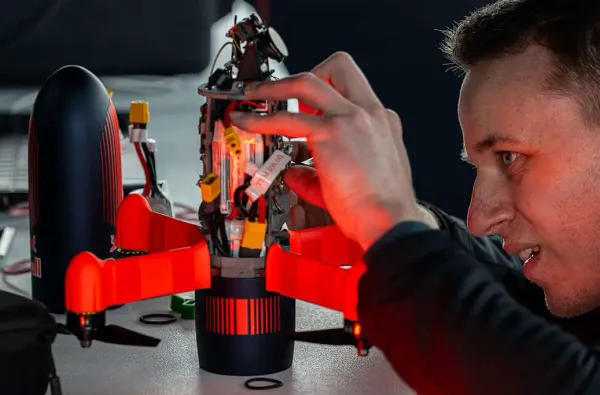FPV (First-Person View) drone flying is an exhilarating hobby that can ignite your passion, but the costs can quickly escalate. Many pilots, whether they're beginners or seasoned pros, fall prey to common financial pitfalls. From buying cheap components that are too good to be true, chasing after the latest upgrades, to overspecing your drone – there are numerous traps lying in wait. But fear not, this blog post will walk you through these common mistakes and arm you with strategies to maintain an affordable yet satisfying FPV journey.
Smart FPV Shopping: Avoiding the Low-Cost Trap
The Allure of Bargain Prices
The Internet is a marketplace full of enticing deals on drone parts. But beware! These seemingly irresistible prices can be a gateway to poor quality, discontinued, or counterfeit components. The unsuspecting drone enthusiast may get caught in a cycle of failed components and hard-to-find replacements, ultimately leading to a whole new, and costly, setup.
Emphasizing Quality Over Cost
The secret to cost-effective FPV shopping lies in valuing quality over cost. It's prudent to invest in budget-friendly, yet high-quality components from trustworthy manufacturers. Though this approach may involve a higher initial expenditure, the long-term benefits – in terms of reliability, ease of sourcing replacement parts, and overall peace of mind – are truly priceless.

Escaping the Upgrade Treadmill
The Urge to Upgrade
In the fast-paced world of FPV, new and ostensibly better products are launched seemingly every month. This constant onslaught of the new and improved can tempt even the most prudent drone pilot into a cycle of unnecessary upgrades. However, if your existing gear is still in perfect working condition, replacing it with the latest version can be an unwarranted financial drain.
If It Ain't Broke, Don't Fix It
Remember the old saying, "if it ain't broke, don't fix it." In the realm of FPV, this wisdom holds particularly true. Savor the satisfaction of making the most out of your current gear, and only consider upgrading once it's truly run its course.

Making the Most of the Secondhand Market
Capitalizing on Idle Gear and Used Equipment
Letting unused gear collect dust is akin to leaving money on the table. Sure, you might take a hit selling something for less than what you paid, but hoarding unused parts is wasted money. Plus, selling unused parts can help fund the gear that you really need. Learning to navigate the secondhand market – both as a buyer and a seller – can be a winning strategy in your FPV journey.
Overcoming the Pitfall of Over-Specification
Right-Sizing Your Gear
Over-specification can lead to unnecessary expenses and even additional problems. For instance, opting for a 2000 KV motor for the supposed extra power, when a 1750 or 800 KV motor would suffice, can put undue stress on your ESC and battery. The key is to choose gear that meets your actual needs and to carefully consider the cost-benefit ratio of new purchases.

Consistency is Key: Streamlining Your Fleet
Fleet Management
Managing a fleet of drones with different parts might sound exciting at first, but it can quickly turn into a logistical nightmare. When a part breaks, you'll need to buy a one-off specific part, which can be both costly and time-consuming. Adopting a consistency strategy – having the same spare parts for all of your drones – can save you time and money in the long run.
Building Your Own: The Advantage of DIY Drones
Escaping the Bind-and-Fly Drones Trap
Bind-and-fly drones may seem like a good deal at first glance. But, often, these drones come with mid-tier components that are similarly priced to high-end builds.
The Joy of DIY
Building your own drones allows you to choose the best components within your specific budget and makes maintenance and repairs more cost-effective. Plus, you're not tied to any particular ecosystem. You have the flexibility to make smart choices tailored to your budget and needs.

Planning for the Unexpected
Contingency Planning
In the unpredictable world of FPV, planning for the unexpected is crucial. Any seasoned FPV pilot will tell you things don't always go to plan. So, when you go to buy a quad, invest in some spare parts and equipment that is durable as well as resilient. This way, you can always repair your gear without adding any extra expense.
The Ultimate Solution
The overarching solution to these financial mistakes lies in learning how to fix and build FPV quads. Building your own drone not only saves you from the trap of overpriced bind-and-fly quads but also grants you the flexibility to make smart choices tailored to your budget and needs. This is truly the path to a cost-effective FPV journey.
Engage, Learn, and Enjoy!
There's no denying the cost implications of the FPV hobby. However, understanding the common financial pitfalls and implementing the strategies outlined in this post can turn the tide in your favor. Remember, every FPV pilot is on a unique journey. What works for one may not work for all. It's all about finding that sweet spot between cost-effectiveness and enjoyment.

Now, over to you! We would love to hear your thoughts on these strategies. Have you ever fallen into one of these traps? What lessons have you learned along your FPV journey? Are there any tips or strategies you swear by that haven't been covered here? Let's keep the conversation going in the comments section below. The FPV community thrives on shared knowledge, experiences, and a collective passion for this captivating hobby. Let's learn from each other and continue to enrich this wonderful community. Safe flying, everyone!







